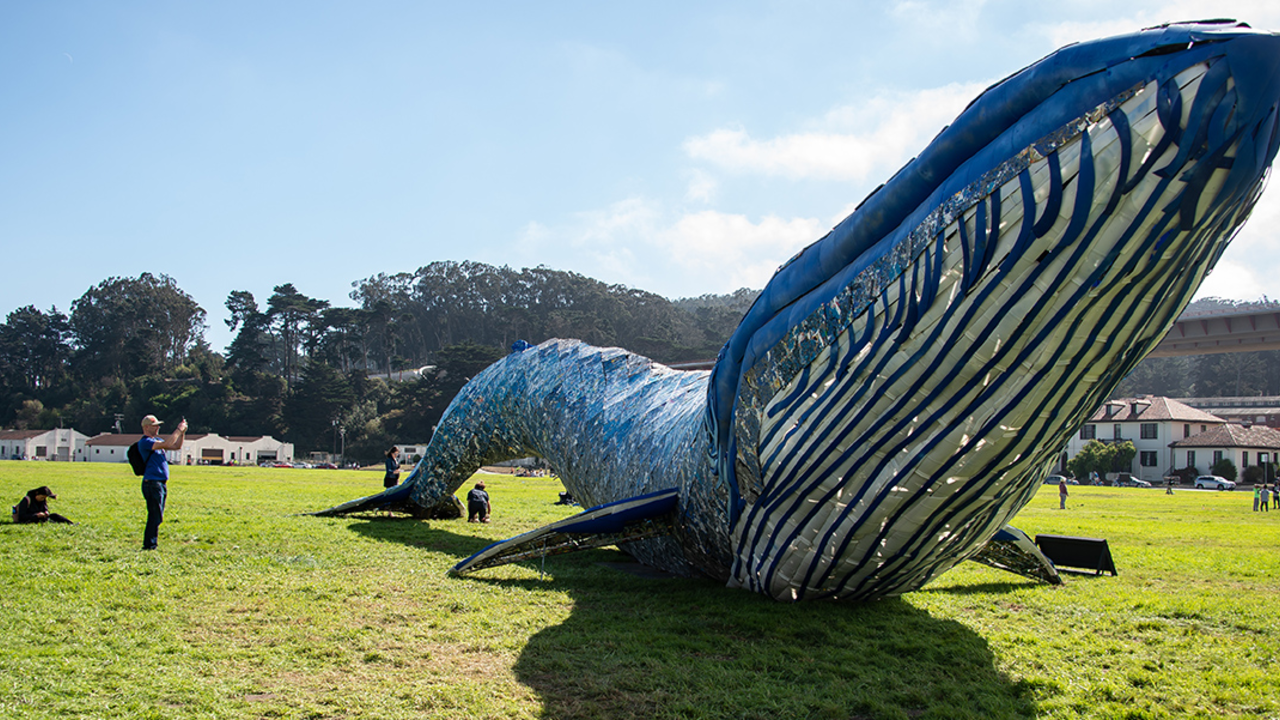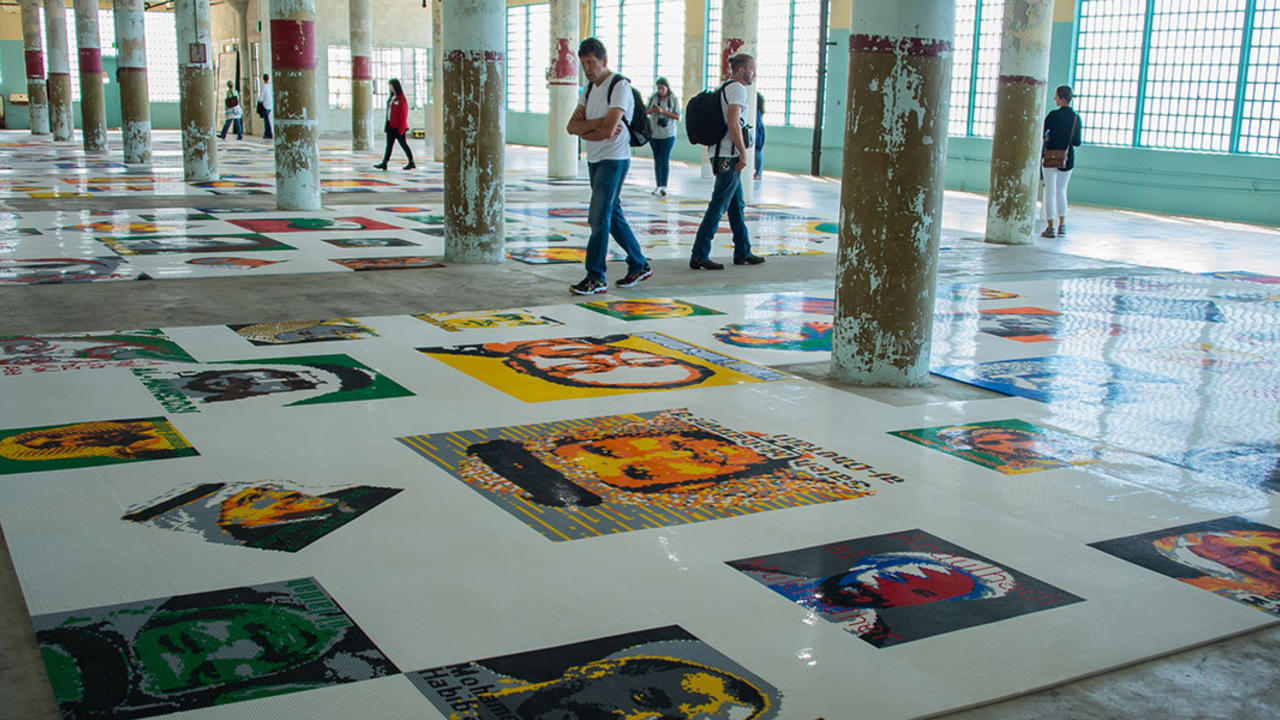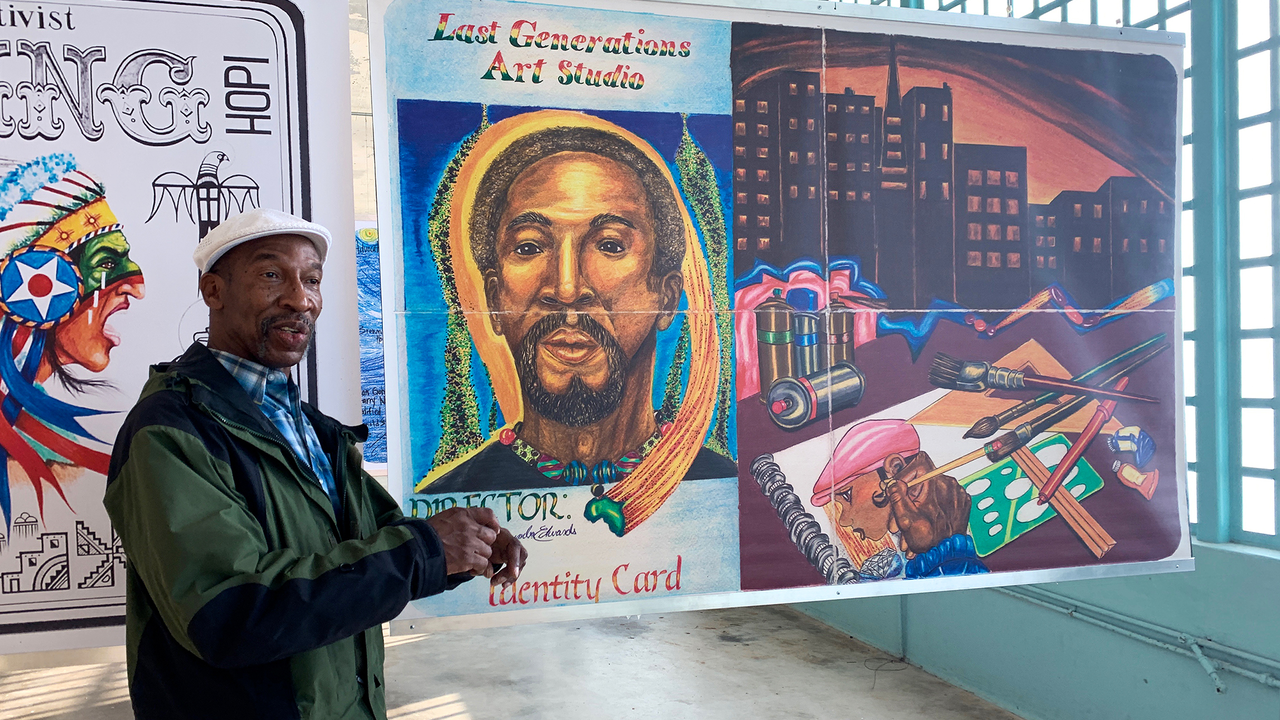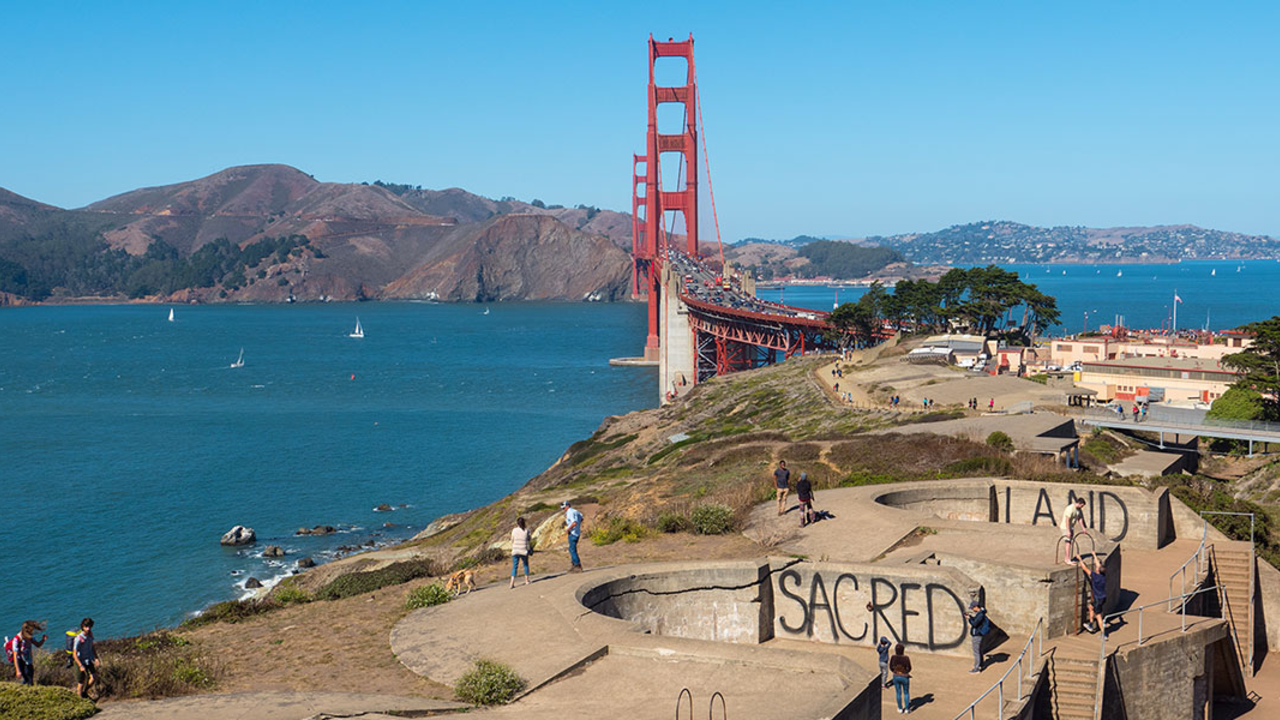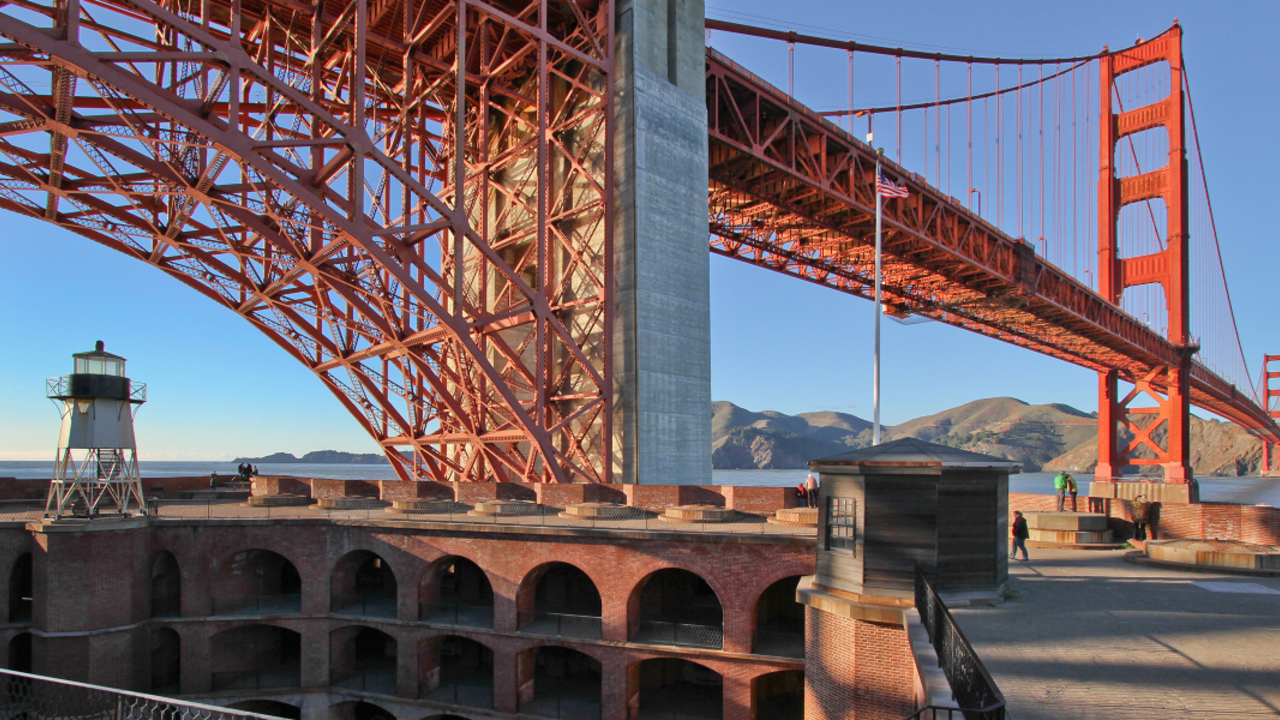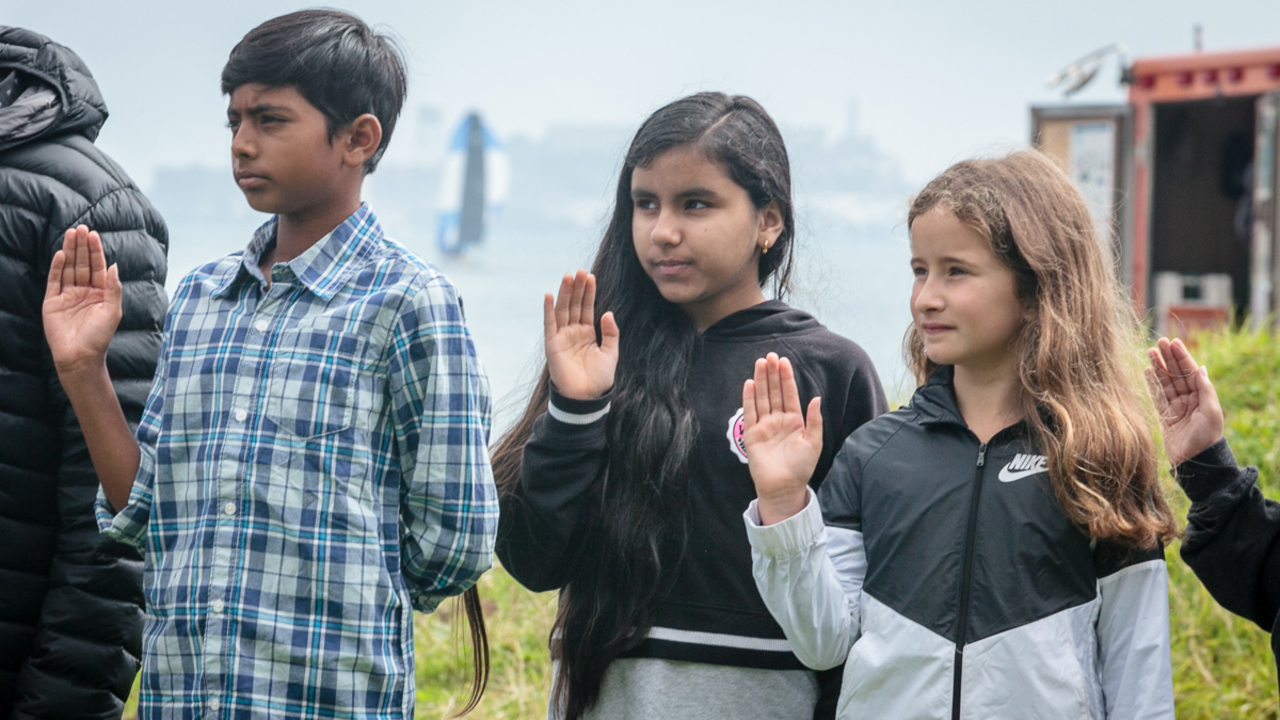Immigrant Yarn Project
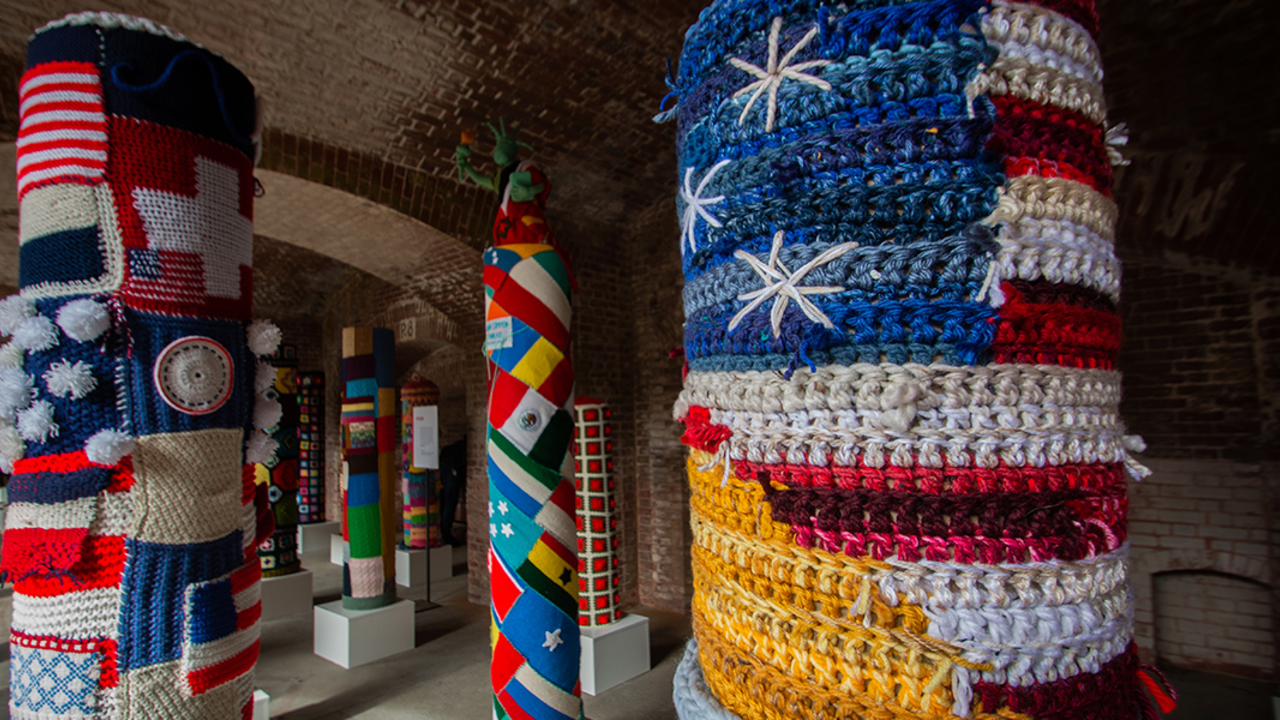
Ryan Curran White/Parks Conservancy
Curator’s Statement
Every once in awhile we come face to face with a situation that shoves us into a sudden and palpable awareness of what Dr. Martin Luther King, Jr. called the inescapable network of mutuality — that whatever affects one of us directly, affects all of indirectly. Understanding this interconnectedness, even across the greatest gulfs of difference is the genesis of the Immigrant Yarn Project — an attempt at holding a mirror up to humanity and seeing reflected both communion and difference.
Cindy Weil, Lead Artist and Exhibition Curator
About immigrant yarn Project
Immigrant Yarn Project was presented at Fort Point by Enactivist in partnership with the Golden Gate National Recreation Area and the Golden Gate National Parks Conservancy through the Art in the Parks program.
Immigrant Yarn Project featured knitted and crocheted yarn contributions made by over 600 contributors from across the country representing generations of immigrants from every corner of the world — and including contributions from homeless communities, seniors, students, LGBTQ, Native Americans, and even a Former Secretary of State.
Led by Founder and Creative Director of Enactivist, Cindy Weil, the knitted and crocheted contributions have been stitched together into sculptures that were installed inside Fort Point. Each submission, both big and small, carries a personal immigration story, made into visual art by the colors and patterns, flags designs, words, or symbols. They seek to represent families, heritage, and the journeys, whether recent or generations ago, that brought these knitters and crocheters to the United States of America. The project embodies and celebrates both our shared immigrant story and our citizenry in a nation composed of diverse backgrounds, families, politics, faiths, identities, and ideas.
To learn more about the Immigrant Yarn Project and Enactivist, please visit Enactivist.org.
Immigration at fort point
Immigrant Yarn Project was fittingly installed in Fort Point National Historic Site. Throughout Fort Point’s storied history, including Native American, Spanish, Mexican, and finally American stewardship, this parcel of land at the mouth of the Golden Gate has welcomed people on the move for hundreds of years. During the Civil War, Fort Point housed Union Soldiers; though the immigrant population was 13 percent, 33 percent of all Union Soldiers were first- or second-generation immigrants. Their contributions gave an “incalculable advantage” to the Union Army’s eventual victory.
As Fort Point stood guardian of the Golden Gate between 1910 and 1940, one million immigrants sailed through to Angel Island Immigration Station, "The Ellis Island of the West". A part of International Coalition of Sites of Conscience — along with Angel Island State Park and Statue of Liberty National Monument — Fort Point invites us to reflect on these stories of immigration and how they have and continue to shape the Bay Area and beyond.
Visit nps.gov to learn more about Fort Point.
Parking and directions
Location: Fort Point is located at the south anchorage of the Golden Gate Bridge at the end of Marine Drive on the Presidio of San Francisco.
Parking: There is limited parking at Fort Point. Additional parking is available near the Warming Hut, a ten minute walk to the Fort. Click here for more information on how to drive to Fort Point.
Public transportation: MUNI 28 bus or PresidiGo (Crissy Field Route): Get off at Golden Gate Bridge stop. Walk fifteen minutes, following trail signs northeast of the plaza to Fort Point at the base of the bluffs. The PresidiGo also stops at Crissy Field at Mason St and Crissy Field Ave, a fifteen minute walk to Fort Point.
